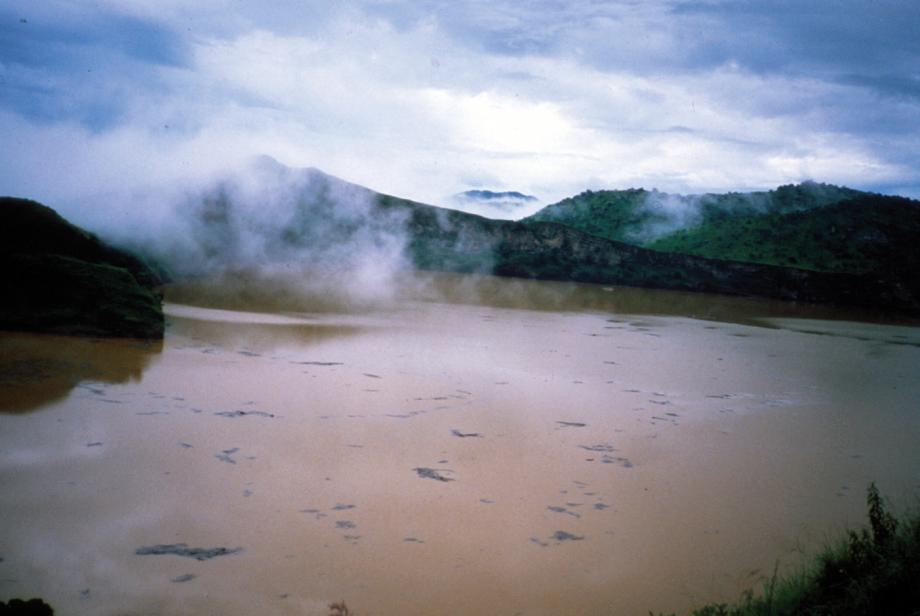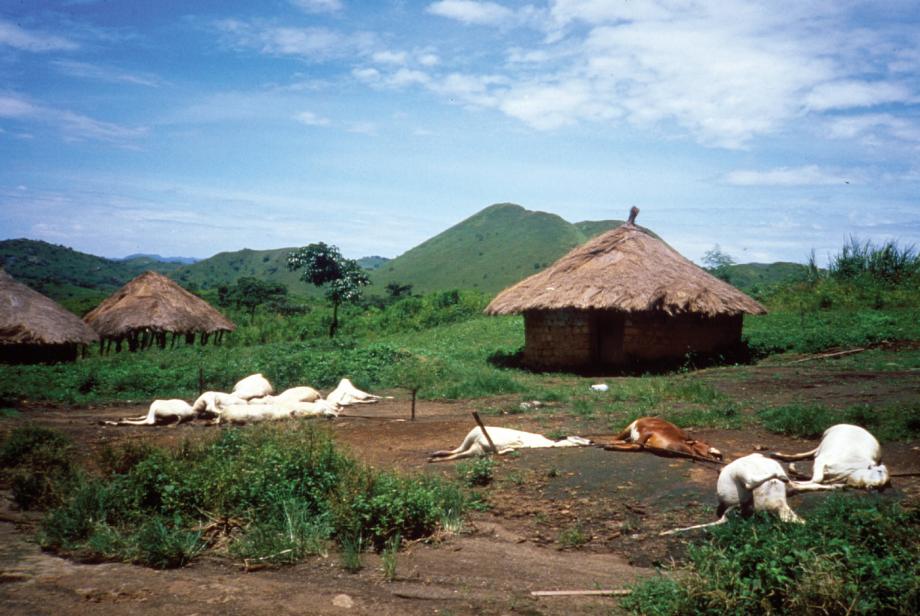Lake Nyos Suffocated Over 1,746 People in a Single Night
Atlas Obscura on Slate is a new travel blog. Like us on Facebook, Tumblr, or follow us on Twitter @atlasobscura.
"I could not speak. I became unconscious. I could not open my mouth because then I smelled something terrible ... I heard my daughter snoring in a terrible way, very abnormal.... When crossing to my daughter's bed ... I collapsed and fell ... I wanted to speak, my breath would not come out.... My daughter was already dead."
These are the words of Joseph Nkwain, who on Aug. 21, 1986, survived one of the strangest natural disasters in history.
Lake Nyos is a crater lake in northwest Cameroon. Formed by subterranean volcanic activity, crater lakes commonly have high levels of carbon dioxide. Under normal circumstances, these gases dissipate as the lake water turns over. But the unusually still Lake Nyos is different. Over hundreds of years its deep waters became a high-pressure storage unit, ever more loaded with gases. More than 5 gallons of carbon dioxide were dissolved in every gallon of water. Lake Nyos was a time bomb.
On Aug. 21, 1986, something in the lake went off. It is unknown what the trigger was—it may have been a landslide, small volcanic eruption, or even something as small as cold rain falling on an edge of the lake. Whatever the cause, the result was catastrophic. The lake literally exploded in what's known as a limnic eruption, sending a fountain of water over 300 feet into the air and creating a small tsunami. Hundreds of thousands of tons of carbon dioxide burst forth at 60 miles an hour, suffocating people up to 15 miles away. Of the 800 residents of nearby Nyos, six survived. In all, 1,746 people died and more than 3,500 livestock perished in a matter of minutes.
Since this disastrous event, French scientists have implemented a degassing program. In 2001 they installed a pipe in that runs to the bottom of the lake and allows the gas to escape at a regular rate. Two more pipes were added in 2011. A solar-powered alarm system monitors carbon dioxide levels, ensuring that, should the lake explode again, there will at least be a warning.
Bizarre Disasters:
View Lake Nyos in a larger map


